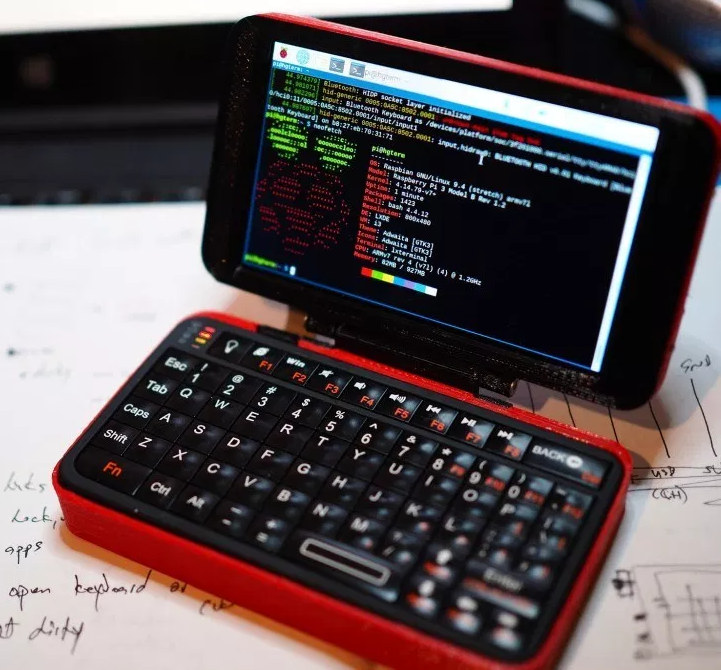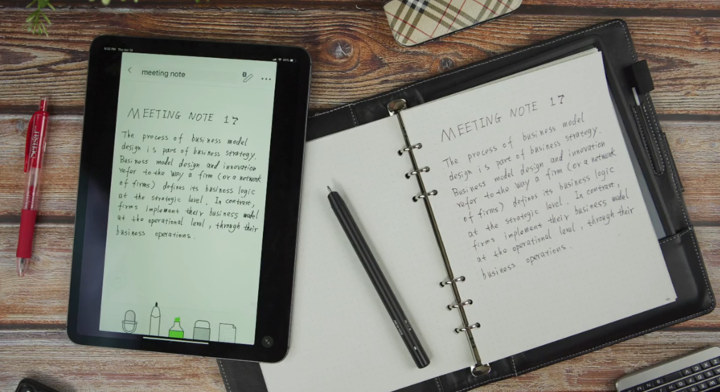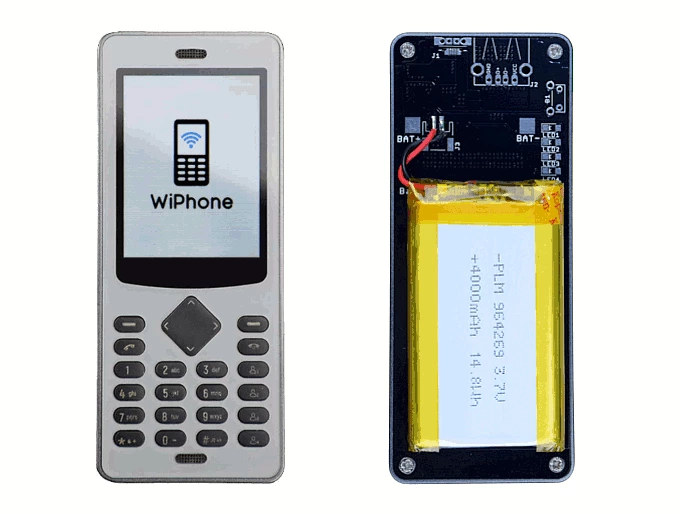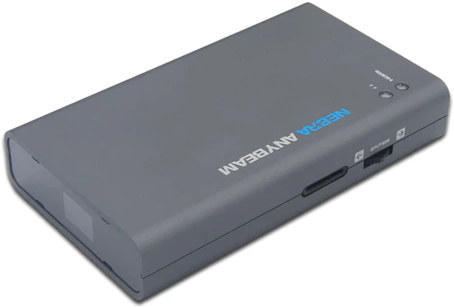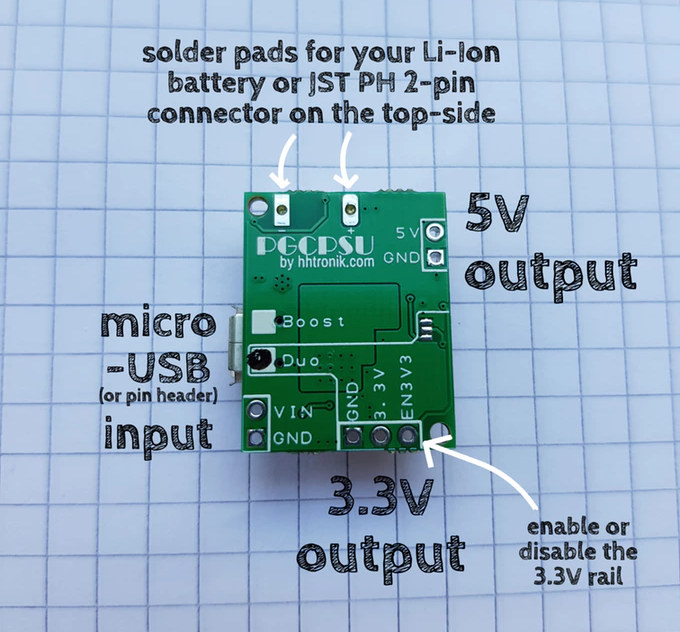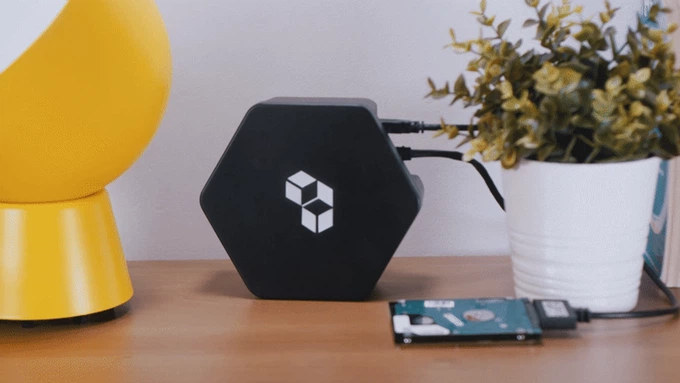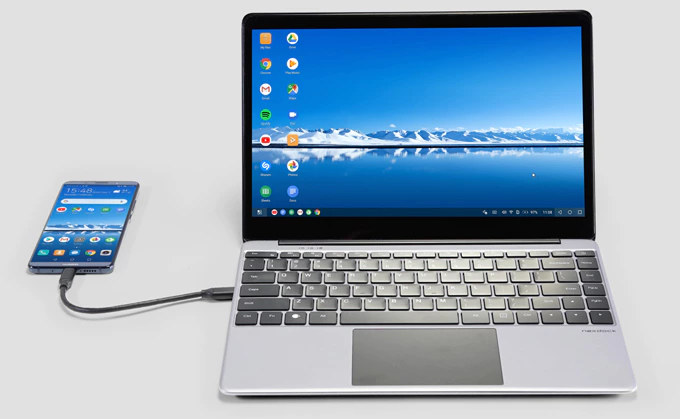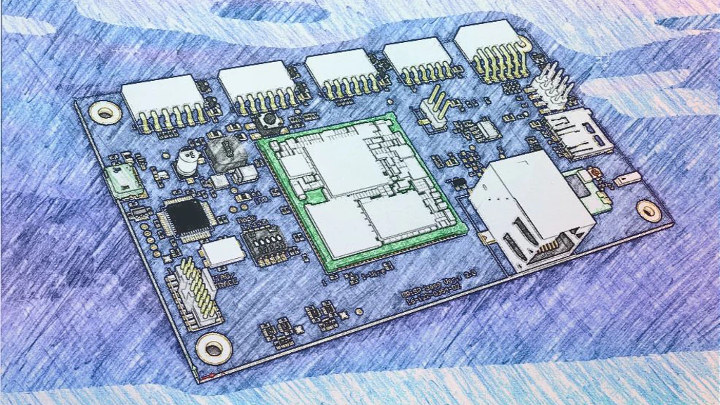There are so many products and projects based on Raspberry Pi that it’s difficult to keep track, and many are often not that interesting, not because they are not useful, but instead because it just feels we’ve seen those before. But this week I’ve come accross three projects that looks to be newsworthy including two handheld computers with a 4″ display, and one retro-gaming console with standard arcade buttons and controls similar to what is found in Pandora’s Box/Key 5S. hgTerm DIY Raspberry Pi Handheld Computer hgterm is a portable computer based on a stripped down Raspberry Pi 3 where the Ethernet port, HDMI port, and most of the USB ports have been removed. It features a 4″ touchscreen display, a Bluetooth keyboard all housed in a 3D printed case. It’s not actually a product that you can buy (yet), but a project made by Igor Brkić which you can […]
Newyes SyncPen Bluetooth Pen Digitizes Your Handwriting to the Cloud (Crowdfunding)
When I first found out about SERVO K07 bluetooth pen last month, I initially hoped it would allow users to digitize their handwriting or drawing and synchronize it to their phone or cloud, but it was not to be the case and instead it was just a 6-in-1 phone/pen/audio player/audio recording/camera/flashlight. But Newyes SyncPen does exactly that: it allows you to write on paper or a writing pad while digitizing your creation on the fly, and storing the result in the cloud. It works thanks to a tiny camera embedded in the pen capturing data at 200 fps. Newyes SyncPen hardware specifications: Connectivity – Bluetooth 4.2 Memory – 32MB, enough to store 800 pages of A5 paper content Pressure levels – 1024 Tiny camera @ 200+ fps Audio – Microphone Battery – 3.4V / 260 mAh Lithium Polymer battery good for about 8 hours; 1.5 hours charging time Dimensions – […]
WiPhone ESP32 VoIP Phone Targets Makers and Hackers (Crowdfunding)
WiPhone – pronounced as in Wi(reless) Phone – is a tiny VoIP phone made for makers and hardware hackers. The phone is based on ESP32 WiFi + Bluetooth SoC, is designed to be easily disassembled and modified both at the hardware and software level. It looks like an entry-level 2G/3G feature phone, except you can make only make phone calls over WiFi using a SiP account, as there’s no cellular modem. WiPhone specifications: SoC – Espressif ESP32 dual core Tensilica LX6 processor @ 240 MHz System Memory – 4MB PSRAM Storage – 16MB flash, microSD card slot Display – 2.4″ screen with 320×240 resolution Connectivity – 802.11b/g/n WiFi, Bluetooth 4.1 dual mode (BT not yet supported in software) Audio – 3.5mm audio jack USB – 1x micro USB port for charging, serial communication and firmware updates Expansion – 20-pin programmable header on back of phone with UART, SPI, I2C, PWM, […]
Makers Friendly Nebra AnyBeam Laser Projector Fits into your Pocket (Crowdfunding)
Nebra Anybeam is a laser pico projector small enough to fit into your pocket. The fanless projector can be powered by a power bank or from the USB port of a computer, and you can play content from your smartphone, laptop or tablet. Beside a consumer devices, the company – Pi Supply – also offers options for makers and tinkerers with a development kit, as well as Raspberry Pi HAT to add the laser projector on top of the popular SBC, as well as a round model powered by Raspberry Pi W Zero board. Nebra Anybeam Projector Nebra AnyBeam key features specifications: Projector Resolution – 720p @ 60 fps Contrast – 80,000:1 Aspect Ratio – 16:9 Brightness – 30 ANSI equivalent to 150 ANSI lumens in a standard DLP projector Video Input – HDMI 1.4 female port Audio – 3.5mm audio jack, 1W speaker Misc – 1/4-20 UNC tripod mount, […]
PGCPSU is a Tiny LiPo PSU Module (Crowdfunding)
Last year we wrote about a two dollars USB 18650 battery shield that allows you to easily power your board over USB using a 18650 LiPo battery. But if you need some more flexibility, and extra features such as reverse polarity protection, PGCPSU, which stands for “Pretty Good Cheap Power Supply Unit”, may be worth looking into. PGCPSU key features & specifications: Power Input – micro USB input or pin header for charging (4.7V to 6V max.) Power Output 5V rail providing at least 350mA, and up to 650mA 3.3V rail providing at least 400mA, and up to 800mA Safety Integrated battery protection including reverse polarity protection Over-discharge, short circuit/over-current protection Power Efficiency High efficiency even at low load, important for long battery life Low quiescent current (49uA for the 5V rail + 57uA for the 3.3V rail) Enable/disable pin for the 3.3V rail with selectable default state solder jumper […]
Cubbit Aims to Crowdsource the Cloud for Improved Privacy (Crowdfunding)
Storing data in the cloud is convenient since you have access it from anywhere with an Internet connection, but there are privacy concerns, and you may have to pay a monthly fee if you exceed you storage limit. Cubbit aims to reinvent the cloud by not storing files in corporate datacenters, but instead relying on a swarm of “Cubbit Cells” to deliver fully private and reliable cloud storage without monthly. You’d just need to pay for the boxes and potentially extra local storage, and then it’s basically free to use afterwards. Cubbit Cell hardware specifications: Processor – Dual core Arm Cortex-A53 processor @ up to 1.2 GHz (possibly Marvell Armada 3700) System Memory – 1GB DDR4 Storage – Built-in SATA drive Networking – 1x Gigabit Ethernet port USB – 1x USB 3.0 port Power Supply – 12V Dimensions – 160 x 142 x 56mm The hardware looks like a basic […]
NexDock 2 Laptop Shell Gets a Full HD Display, a USB type-C Port (Crowdfunding)
NexDock 14″ laptop shell was first introduced in 2016 to help people convert their smartphones or single board computers into a laptop with a display, a keyboard and battery. The crowdfunding campaign was successful with over $360,000 raised for the projects, and the first NexDock has been shipped to 2,600+ backers. The following year, the company – now called Nex Computer – announced plan to develop NexDock 2 with support for Intel Compute Cards. This did not quite work out as expected since Intel decided to stop further development of Compute Cards, but not all is lost as Nex Computer has now launched NexDock 2 with an aluminum body, a slightly smaller but higher resolution Full HD display, an edge to edge keyboard, and a USB type-C input port. NexDock 2 specifications: Display – 13.3” IPS LCD display with 1920×1080 resolution, 16:9 aspect ratio Video Input – Full-size HDMI input […]
GRiSP 2 Board Targets Embedded Erlang & Elixir Development (Crowdfunding)
Erlang is described as a programming language used to build massively scalable soft real-time systems with requirements on high availability, and used in telecoms, banking, e-commerce, computer telephony and instant messaging. Elixir is a dynamic, functional language designed for building scalable and maintainable applications that leverages the Erlang VM, known for running low-latency, distributed and fault-tolerant systems. Elixir is used in many types of applications from higher-level web development to the embedded software domain, and Peer Stritzinger designed GRiSP board especially for the latter in 2017. He’s now back with GRiSP 2 featuring an NXP i.MX 6ULL SoM running Linux and RTEMS (Real-Time Executive for Multiprocessor Systems) RTOS. GRiSP 2 board is comprised of a system-on-module and baseboard with the following specifications: System on Module SoC – NXP iMX6UL Arm Cortex-A7 @ 696 MHz, 128 KB L2 cache, with TRNG, Crypto Engine (AES/TDES/SHA), Secure Boot Memory – 128 MB DDR3 […]


